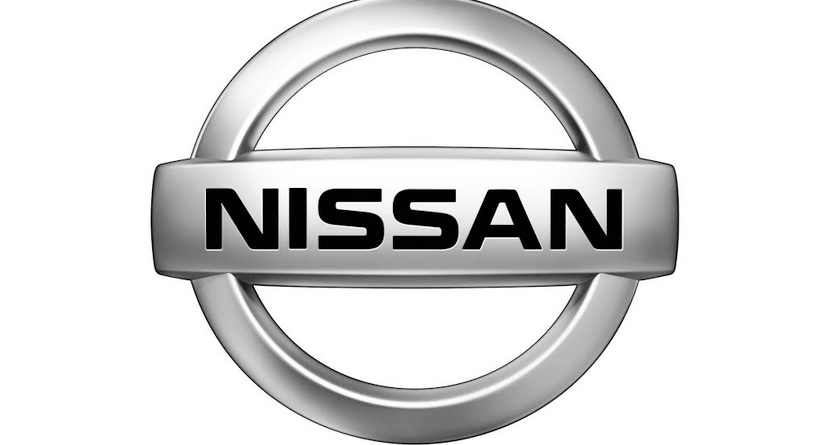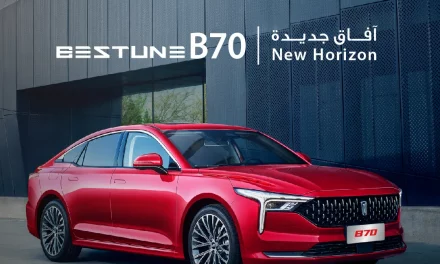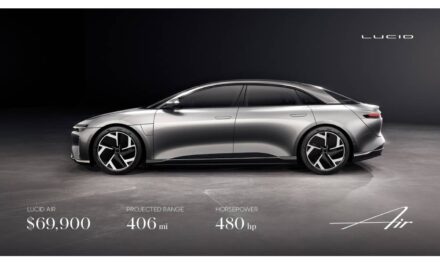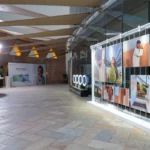
Q&A Autonomous Vehicles & Society with CNET Editor at large, Brian Cooley

The future of transportation is coming into full view as autonomous driving technologies hit the road. It’s an exciting new chapter in the history of transportation. But it also presents many questions about what needs to also happen in terms of fostering customer adoption and trust in the driving public — and society — at large.
Our first series of stories on DRIVE Publication shared a behind-the-scenes look at some of the people working on future driving technologies — from Melissa Cefkin, principal scientist and design anthropologist at the Nissan Research Center in Silicon Valley, who is researching the implications of cars and humans interacting together — to Tetsuya Iijima, General Manager of Autonomous Drive Technology Development Department at Nissan Motor Co., Ltd. in Japan.
To get a closer perspective from others participating in the conversation, we sat down with CNET Editor at large, Brian Cooley, a long-time technology expert as well as a veteran auto reviewer. In this two-part Q&A series, Brian shares his perspective on autonomous vehicles, the social acceptance necessary to see the technology come to the masses and the potential societal implications we may witness.
Q: The autonomous driving era is obviously going to mark an important inflection point in the history of mass transportation. How important will it be to foster consumer trust?
Consumer trust is going to be unusually important here. It’s not like other technologies that have come before — or where if you had a weird smartphone or an early computer and it didn’t go right for you, nobody died. This is a different market where the payload, if you will, the risks, are extremely high. Everyone understands that and as a result every consumer feels that little pang when they think about a car driving itself. Who might get hurt if that happens? That’s, first in their minds. Right after that, they start thinking about costs and whether or not the value is there.
Q: So when you think about acceptance and consumer trust, what are the two or three things it will hinge on?
I see three things that consumers hit me with all the time. The same big 3 concerns. Number one, they’ll say, `I’m a good driver. The other guy needs this.’ We’ve always thought this as drivers. It’s always the other guy who’s the problem. We think we’re great. Well 35,000 fatalities in the U.S. every year prove that we’ve kind of bottomed out on everything else in bringing that number down. So there’s the argument that well, you’re not as good as you think.
The next argument is that `I don’t trust computers’ because they think that computers are all the same. Consumers see it as a general purpose computer that they’re going to stick under the dashboard of their car, say a Windows machine or a Mac, with all of its foibles because that’s low cost computing. If you look at the more specific computers that go into self-driving cars, I think we can start to assuage their fears by saying this is a computer like AirBus has a computer, like Boeing has a computer, not like what you have on your desk at home, which is a little more fallible.
And another is people are going to push back a lot on this idea of enfeeblement. Let’s face it: The only two times in your life when you’re told that you can’t drive are when you’re too young, when your parents say no, or when you’re too old, and your kids say no. And those are neither very good feelings in terms of our identity, our own value and worth and ability to carry out our own intentions. So there’s a lot of baggage around that. Those are things that keep reverberating.
Q: How long will it take for trust to reach that 100% point?
The trust picture is a little unknowable right now because we have so few cars on the road that are even partially self-driving, let alone highly or fully self-driving. So it’s a little hard to ping consumers and poll them on this. They don’t have enough experience or reference points. They mostly have whatever they imagine in their head and that, of course, is not a reliable enough base to assess, to start to go out and measure. So I feel a little awkward right now about trying to figure out how long it will take. I don’t think it’s going to take as long as the doomsayers say, where it may take decades.
From what we’ve seen in a lot of early tests with companies that are deploying self-driving cars they are always finding it surprising how fast the average consumer who is brought in for a test will get comfortable…sometimes surprisingly quickly. Sometimes inside of an hour, they’ll go from being nervous, to relaxing, to reading a book to taking a nap while in one of those cars. That gives an indication that it may not be such a high hill to climb.
Q: The public is starting to get more familiar with specific areas of autonomous driving. How important is that step by step approach?
Most of us are driving a car that has some autonomy in it. It may not look like it but if you have a car that does some self-parking…if you have adaptive cruise control, it’s not that uncommon. If you have a car that will vibrate or bring you back into your lane if you drift — all of these are found, even in rental cars in some cases today. When stitched together, those become tomorrow’s self-driving car. That means we’re planting the seeds of modular acceptance, which will become system acceptance later. That doesn’t minimize the fact that it’s still a big leap but the seeds are being sown.
If you want to find an analogue in the history of technology, take a look at the smartphone. That was a pretty major device but it stood on the shoulders of behaviors that came before it. We knew what it did because of the personal computer, because of digital cameras, because of a portable navigation device we might have had. We were able to synthesize those modular experiences so — `Oh, I got it. That’s what a smartphone is. I’ll go spend the money and make the commitment.’
Q: In thinking about how to generate widespread social acceptance, are there historical parallels you can find with other the adoption of other new technologies?
Take a look at simple, plain cruise control that just holds your speed. That had a little bit of voodoo around it when it first arrived. A lot of people didn’t trust it. If you really want to go back a way, look at women driving. There was a time when a chauvinistic population at the time that didn’t really believe that was going to be safe on the road. So whether it’s technology or whether it’s social outlook, we’ve gone through some iterations already of pretty convulsive change in what we have faith in on the road. This is another one. It’s just the biggest one.
Q: Is there technology already in the market that’s building trust or confidence between drivers and their vehicles?
We have a lot of other technology avenues that I think can help teach the automotive category how to go through this new territory. Take a look at smartphones and take a look at wearables. Those are two areas now where we are really trying to raise the stakes of technology. To have your home and yourself recorded, monitored, gathered and made available to services that want to help you out. That’s exposing yourself; that’s some degree of risk; that’s some degree of inviting technology into what used to be an analogue safe zone where you pushed all the buttons yourself. I’m sure there are lessons there. Consumers are being asked to embrace a lot that involves trust right now.
Q: Brian, how will AD technology change individual relationships or behavior when it comes to their relationship with driving?
This will be the single biggest change in what we view as our relationship with transportation in any of our lives. I would say it’s the biggest change in automotive since automotive. It’s not just you trusting technology to move the wheel and work the gas and the brake, but are you comfortable thinking about a new way of getting around that’s not tied into a vertical stack of, `I have a license, I have insurance, I own a car, I park it here — and it’s all stacked vertically.’ Right now, we’re very comfortable with that enormous stack of responsibilities and costs. But I have a feeling consumers will be open to changing that when they can be free and that stack gets a little lighter and there’s a little less cost on their shoulders. People like that.
Q: So the implications on the broader society, it’s a pretty big deal?
Yes. Number 1 is accident reduction. Down to zero is very credibly talked about in the next few decades. Then you take a look at road utilization. Nobody wants to see more of the land in their area paved. You’ll have more cars that are being used more effectively and also use less space. Self-driving cars are very good at taking the gaps out in traffic because they can follow each other precisely. Now you might need a lot less road for the same number of cars.
And more importantly, think about how many cars — the majority of them — spend their time parked. Most cars just sit and basically do nothing all day. You’re not using them when you’re asleep; you’re not usually using them when you’re at work, in the mall, at the movies, at a restaurant. They are all interstitial uses and that’s an enormous waste of the potential of the fleet. So if we can really start to draw the fleet down and take a lot of the load off the amount of roadway and infrastructure we need. That changes a lot of businesses. It changes the nature of how you make money in the car business, how you make money in the automotive and insurance business and what it means to be a car versus transportation.
Q: Stick with that point. It also creates a different kind of personal space in the vehicle and opens it up to the car becoming more of a productivity area.
Yeah. As carmakers probe a little deeper, beyond 10 years, into what the meaning and relationship that we’ll have with cars will be like, look at as freeing up personal time and that being the new statement of luxury in a vehicle. Which can mean that a luxury car is not a big car, a heavy car, a leather and wood car, and as many cylinders under the hood as possible car. But a car that simply gives you back some time. That’s the ultimate luxury and everyone can relate to that and arguably, everyone will be able to access that. The real luxury of autonomy and the time you take back from slavishly managing a wheel and pedals is going to be pushed across all levels of cars. It’s a nice thing.
Q: How else do you think this is going to improve peoples’ lives?
Well, think about what you’ll do when you don’t have to drive? That is the question of tomorrow. You can only put on so much makeup. You can only eat so much fast food. You can only yell at the kids in the back seat so many times. What you have an unlimited appetite for is media. And you can imagine that the guilty use of media too many people do today becomes legitimized in not too many years into the future where the car will have information, “I’m driving now and you don’t need to worry about it.” It’s what they call Level 4 driving in auto parlance.
Then you can legitimately dive into media, whether it’s for work, entertainment or staying in touch with family. That’s another derivation of this idea of new luxury in the car, the luxury of having social connection with someone who’s in the car or not…Imagine the new social experience of going on road trips and family trips, whether it’s casual or long planned. There’s a different dynamic in the car. You start to look forward to it much more.
Q: Policy regulation and infrastructure — what are challenges that still need to be overcome?
Let’s face it, self-driving cars are very autonomous but they aren’t that autonomous from the infrastructure around them. The autonomy within the environment around them actually becomes more important. Right now, cars on the road are these beings that are disconnected. It’s between driver and car and the car doesn’t have much of a relationship with its environment, to be honest. That will get much more rich in the future as we get vehicle to vehicle communication, which will likely arrive first in the next handful of years, where cars talk to each other.
Then you’ll also see vehicle to infrastructure communications, and that might be a few more years down the road because it does require some digging, some installing and some budgeting. But then you get the roadways talking to the cars that are talking to each other.
Pretty soon you start to establish a very smart hive mind of vehicles that are working together in a seamless way and should never have a problem. If you have a car that’s looking for things out ahead of it and the car ahead of it is looking out for the red lights or green lights around it, then you almost have 2 or 3 levels of security and 2 or 3 levels of flow management that can make sure you’ve got the right cars with the right people in the right places at the right time.
Just take one look at parking. Parking alone is a huge problem to solve. Imagine if every spot in the world reported up to the cloud and so every car that was looking…could find that spot.































